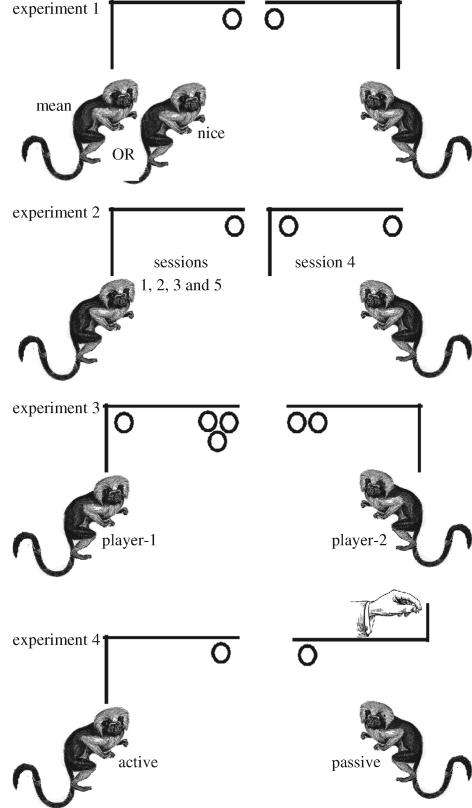Figure 3.
Four different games played by genetically unrelated cotton-top tamarins. In experiment 1, each subject played alternating sessions (24 trials, 12 trials each) with either a nice stooge (trained to pull the tool 100% of the time) or a mean stooge (trained to pull the tool 0% of the time). In experiment 2, subjects played a reciprocating altruism game (i.e. no food for actor but one piece for recipient) for the first three sessions, the fourth session as byproduct mutualism game (i.e. a piece of food for the actor and the recipient), and the final fifth session as a reciprocating altruism game. In experiment 3, one subject was assigned to the player-1 position (pulling provided one piece to the actor and three pieces to the recipient) and one to the player-2 position (pulling provided no food for the actor and two pieces to the recipient). In experiment 4, the active tamarin could pull as an altruistic act (no food for self, one for the recipient), while the passive tamarin had no opportunity to pull; instead, when the tool switched to the passive tamarin's side, the experimenter pushed the tool on 100 per cent of the trials, thus mimicking the payoff structure for the nice stooge in experiment 1.

